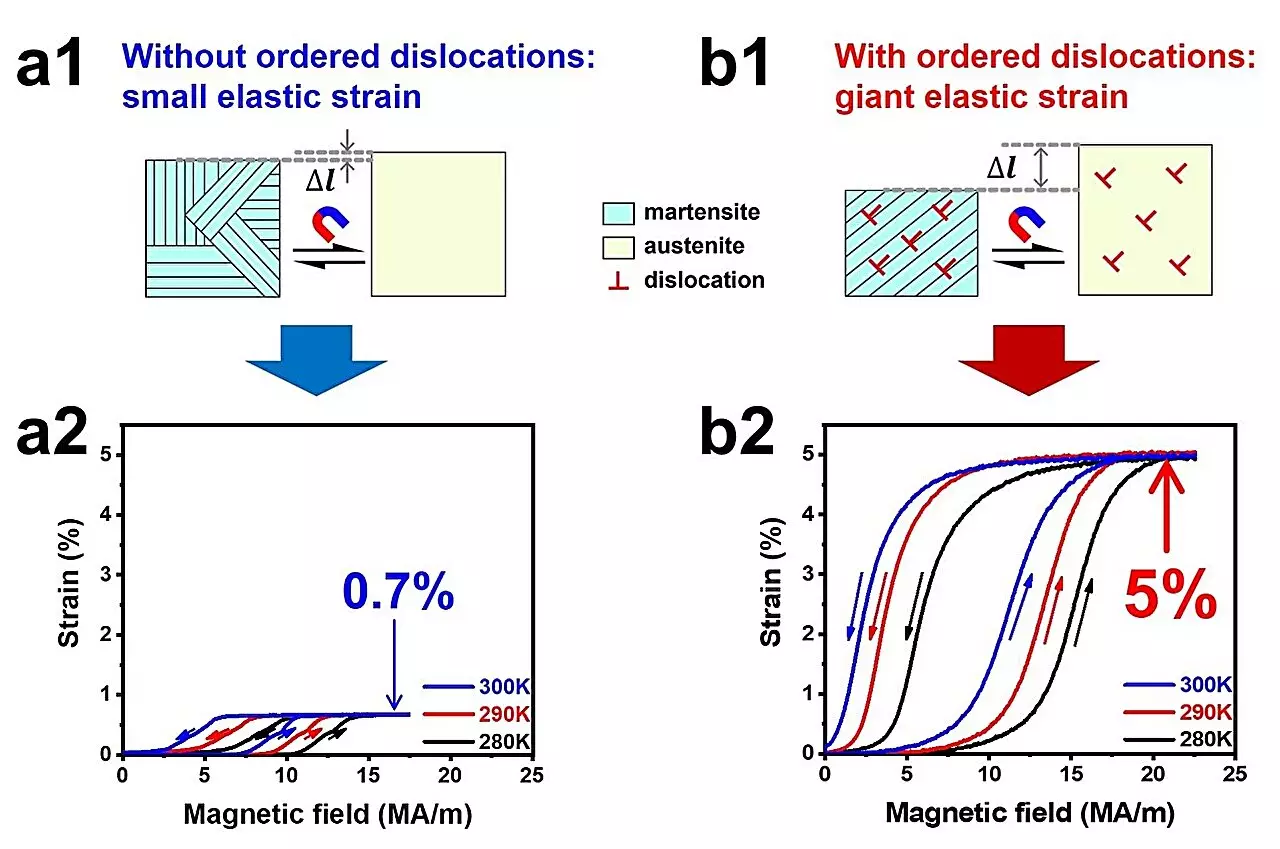In a recent study published in Advanced Science, a research group successfully developed a giant magneto-superelasticity of 5% in a Ni34Co8Cu8Mn36Ga14 single crystal. This breakthrough was accomplished by introducing arrays of ordered dislocations that led to the formation of preferentially oriented martensitic variants during the magnetically induced reverse martensitic transformation.
Elasticity, the ability of materials to return to their original shape after deformation, is a crucial property in various industries. Most metals exhibit an elasticity with a strain of 0.2%, but shape memory and high entropy alloys can display superelasticity with strains of several percent. Magneto-superelasticity, induced by a magnetic field, is particularly important for contactless material operations, as well as the development of new large stroke actuators and efficient energy transducers.
The researchers, in collaboration with the High Magnetic Field Laboratory at the Hefei Institutes of Physical Science of Chinese Academy of Sciences, conducted a stress-constrained transition cycling (SCTC) training for the Ni34Co8Cu8Mn36Ga14 single crystal. By applying compressive stress, the team introduced ordered dislocations with a specific orientation. These ordered dislocations played a significant role in influencing the formation of specific martensitic variants during the reversible transformation induced by a magnetic field.
Furthermore, the researchers designed a device using a pulsed magnetic field with the single crystal. The device, with a pulse width of 10 ms, demonstrated a large stroke at room temperature due to the giant magneto-superelasticity of the crystal. In terms of applications, the device showed a rapid response to an 8 ms pulse with a delay of approximately 0.1 ms. This innovative approach not only showcases the potential of high-performance functional materials but also highlights the importance of defect engineering in material science.
The successful development of giant magneto-superelasticity in the Ni34Co8Cu8Mn36Ga14 single crystal opens up new possibilities for advanced material applications. By combining reversible martensitic transformation with the preferential orientation of martensitic variants, the researchers were able to achieve a significant enhancement in elasticity. This research not only contributes to the field of material science but also provides a promising strategy for accessing high-performance functional materials through defect engineering.


Leave a Reply